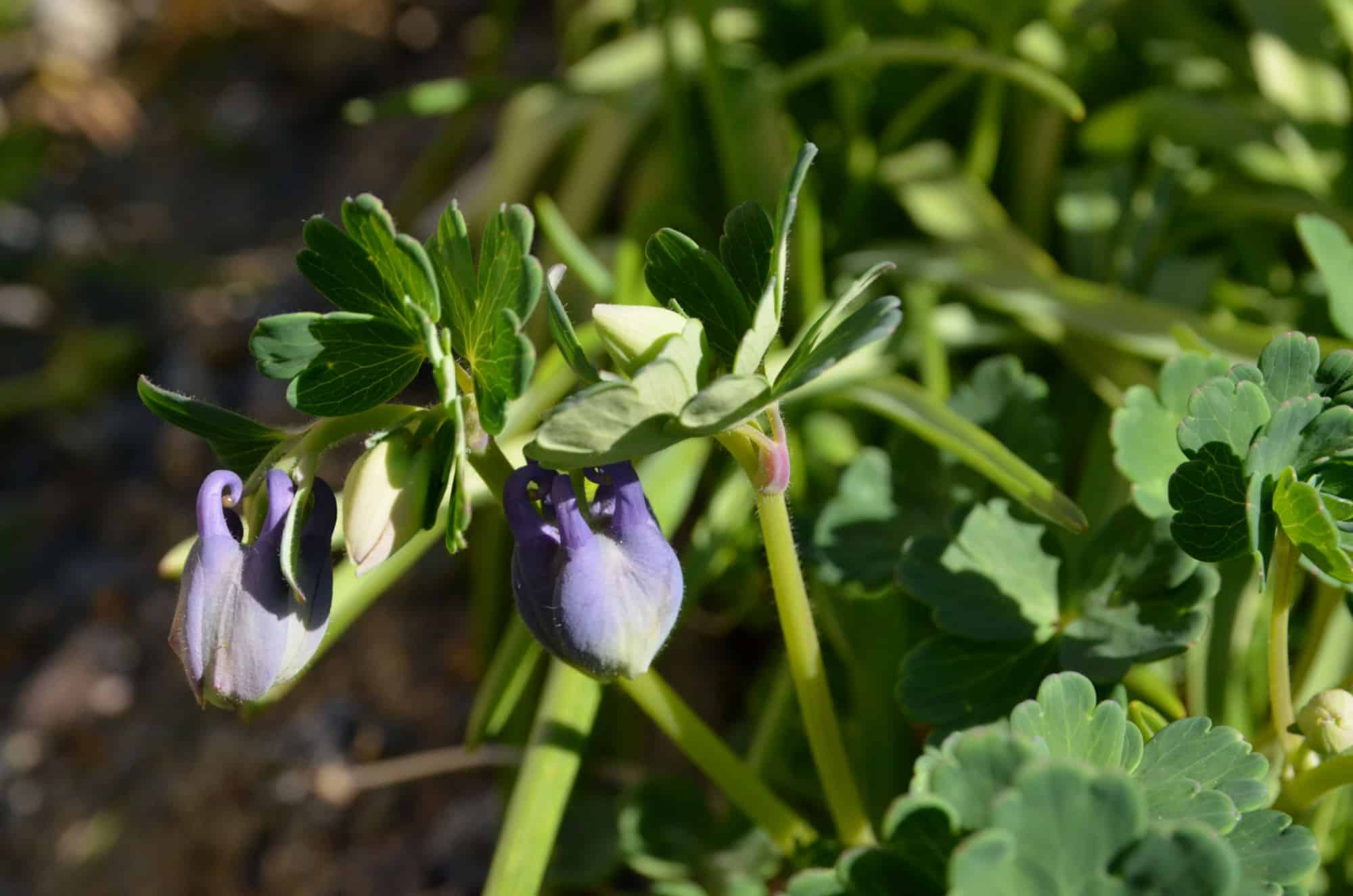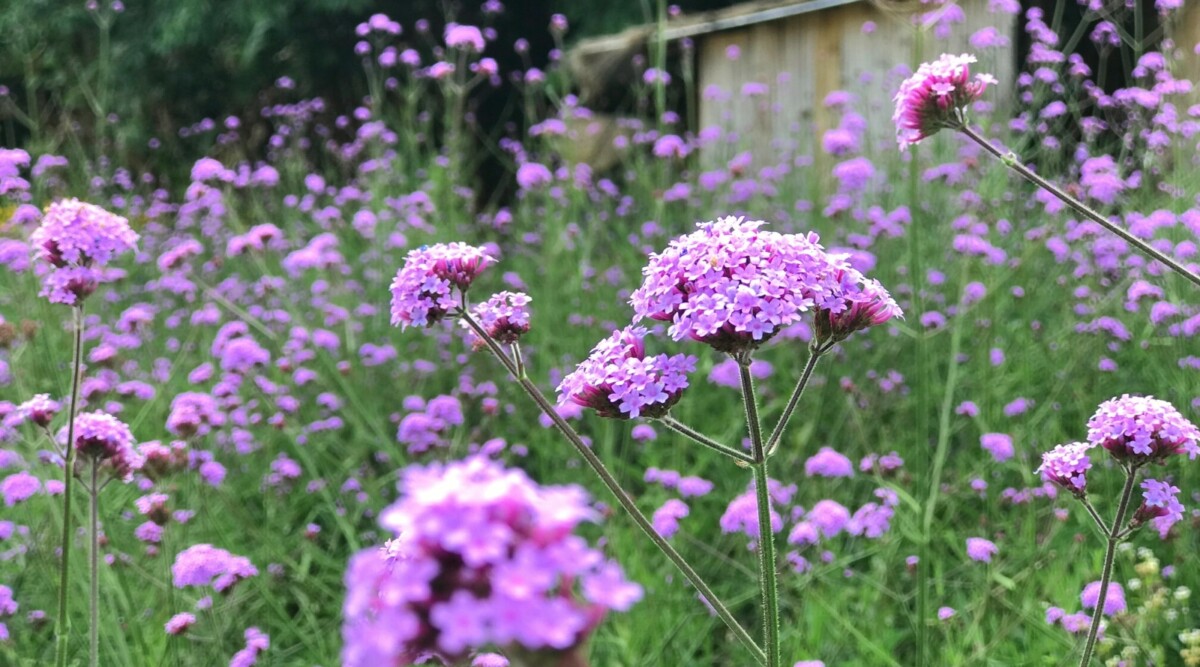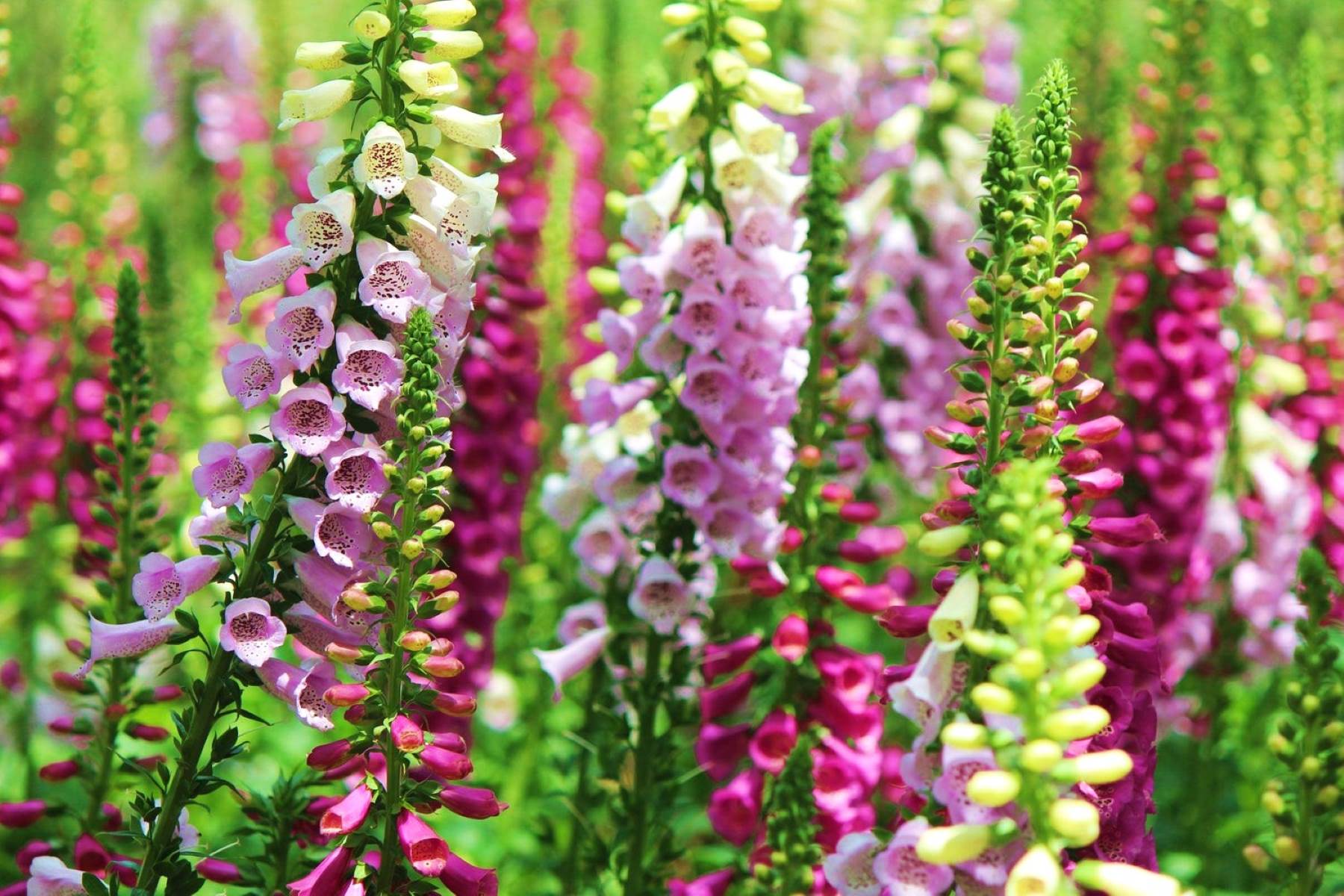Home>Garden Essentials>When To Plant Grass Seed In Minnesota


Garden Essentials
When To Plant Grass Seed In Minnesota
Modified: March 15, 2024
Looking to start a garden in Minnesota? Discover the best time to plant grass seed and achieve a lush, green lawn in your garden.
(Many of the links in this article redirect to a specific reviewed product. Your purchase of these products through affiliate links helps to generate commission for Storables.com, at no extra cost. Learn more)
Introduction
Welcome to Minnesota, the Land of 10,000 Lakes and lush landscapes. If you’re a proud homeowner or a gardening enthusiast in this beautiful state, you may be wondering when the best time is to plant grass seed. Well, you’ve come to the right place. In this article, we’ll explore the optimal timing for planting grass seed in Minnesota, as well as share some valuable insights and tips to ensure your lawn thrives.
Minnesota experiences a diverse climate, ranging from hot and humid summers to bitterly cold winters, which can often be a challenge for growing and maintaining a healthy lawn. However, with careful planning and proper techniques, you can achieve a lush and vibrant grassy expanse that will make your neighbors green with envy.
Before delving into the details of when to plant grass seed in Minnesota, it’s essential to consider the climate factors that play a significant role in successful lawn establishment. Understanding these factors will guide you in selecting the right grass seed type and implementing appropriate care practices.
Key Takeaways:
- Plant grass seed in Minnesota during spring or fall for best results. Choose the right grass type and prepare the soil to ensure successful establishment.
- Proper care, including watering, mowing, and weed control, is essential for newly planted grass seed in Minnesota. Be patient and address issues promptly for a lush lawn.
Climate Considerations
Minnesota’s climate is characterized by cold winters and hot, humid summers. This means that the grasses you choose for your lawn should be able to withstand both extremes.
Two of the most common grass types for Minnesota lawns are Kentucky bluegrass and fine fescue. Kentucky bluegrass is known for its durability and ability to handle heavy foot traffic, while fine fescue is more shade-tolerant and requires less maintenance.
When selecting grass seed, look for varieties that are specifically bred for the cold climate of Minnesota. These varieties will have better disease resistance and be more likely to thrive in the local conditions.
In addition to choosing the right grass type, understanding the soil composition of your lawn is crucial. Minnesota soils can vary widely, from sandy and well-drained to heavy clay. Conduct a soil test to determine the pH level and nutrient content of your soil. This will help you determine if any amendments are needed to create an optimal environment for grass seed germination and growth.
Now that you have a better understanding of the climate considerations in Minnesota, let’s move on to the different types of grass seed suitable for this region.
Grass Seed Types for Minnesota
Choosing the right grass seed for your Minnesota lawn is crucial for its long-term success. Here are the top grass seed types that thrive in the varying climate conditions of the state:
1. Kentucky Bluegrass: This is the most popular grass type in Minnesota. It has excellent wear tolerance and can handle heavy foot traffic. Kentucky bluegrass establishes a dense, lush, and visually appealing lawn. It thrives in cooler temperatures, making it ideal for the spring and fall seasons.
2. Fine Fescue: Fine fescue is a cool-season grass that performs well in Minnesota. It has great shade tolerance, making it suitable for lawns with lots of trees or areas with limited sunlight. Fine fescue requires less mowing and watering than other grass types and is known for its low maintenance requirements.
3. Perennial Ryegrass: Perennial ryegrass is a popular choice for overseeding lawns in Minnesota. It germinates quickly and has good tolerance to cold temperatures. Perennial ryegrass is often used in blends with other grass types to enhance the appearance and durability of the lawn.
4. Tall Fescue: Tall fescue is a hardy grass type that can withstand the extremes of Minnesota’s climate. It has good drought tolerance and adapts well to different soil types. Tall fescue is known for its deep root system, making it resistant to heat and drought stress.
When selecting grass seed, consider factors such as the amount of sunlight your lawn receives, the soil type, and your maintenance preferences. It’s also worth exploring grass seed blends that combine different varieties to achieve a well-rounded and resilient lawn.
Now that you have an understanding of the grass seed types suitable for Minnesota, let’s move on to the vital step of soil preparation before planting.
Soil Preparation
Proper soil preparation is vital for successful grass seed germination and healthy lawn establishment. Here are the essential steps to prepare your soil for planting grass seed in Minnesota:
1. Remove Existing Vegetation: Start by clearing the area of any existing vegetation, including weeds, rocks, roots, and debris. Use a rake or a garden tiller to loosen the top layer of soil and remove any surface obstructions.
2. Test the Soil: Conduct a soil test to determine the pH level and nutrient content of your soil. This will help you identify any deficiencies and adjust the soil accordingly. Most lawns in Minnesota prefer a slightly acidic soil with a pH range of 6.0 to 7.0.
3. Amend the Soil: Based on the results of the soil test, you may need to add soil amendments such as lime to raise the pH or sulfur to lower it. Additionally, incorporate organic matter like compost or peat moss to improve soil structure and nutrient retention.
4. Level and Grade: Ensure that the soil surface is level and properly graded. This will help with water drainage and prevent puddling or pooling of water on the lawn. Use a rake or a leveling tool to even out any uneven spots.
5. Loosen the Soil: Use a garden tiller or a rake to loosen the top 4-6 inches of soil. This will improve the soil’s texture and allow the grass seed to establish strong root systems.
6. Remove Large Stones and Debris: While loosening the soil, remove any large stones, roots, or debris that may impede the growth of the grass seed or cause an uneven surface.
By properly preparing your soil, you provide the optimal conditions for grass seed germination and the establishment of a healthy lawn. Once your soil is prepared, it’s time to determine the best time of year to plant grass seed in Minnesota.
Best Time of Year to Plant Grass Seed
Timing is crucial when it comes to planting grass seed in Minnesota. The best time to sow grass seed is during the cool seasons of spring and fall. Here’s a breakdown of the ideal timing for each season:
1. Spring: Spring is an excellent time to plant grass seed in Minnesota. As the temperatures start to rise and the soil begins to warm up, the conditions become favorable for seed germination. Aim to plant grass seed in late April or early May when the soil temperature reaches around 60°F (15°C).
2. Fall: Fall is considered the optimal time for planting grass seed in Minnesota. The cooler temperatures, abundant rainfall, and decreased weed competition create a favorable environment for the seed to germinate and establish strong roots. Plan to plant grass seed in late August to early October, about six to eight weeks before the first frost.
By planting grass seed during the recommended seasons, you give the seedlings ample time to establish their root systems before the extreme temperatures of summer or winter set in. This promotes healthier and stronger growth, leading to a more resilient lawn.
Apart from the seasonal considerations, it’s essential to monitor weather conditions before planting. Ideally, choose a day when the weather is mild, with moderate temperatures and overcast skies. Avoid planting grass seed during excessively hot or dry periods, as they can hinder germination and make it challenging for the seedlings to survive.
Now that you’re aware of the optimal timing for planting grass seed, let’s move on to the necessary steps for successfully establishing your new lawn.
The best time to plant grass seed in Minnesota is in late summer or early fall, typically from mid-August to mid-September. This allows the seeds to establish before winter and gives them a head start for the following spring.
Read more: When To Seed Lawn In Minnesota
Steps for Planting Grass Seed
When it comes to planting grass seed in Minnesota, following the proper steps will maximize your chances of success. Here, we outline the essential steps for achieving a healthy and vibrant lawn:
1. Prepare the Soil: Follow the soil preparation steps mentioned earlier to ensure a well-prepared seedbed. Clear the area of debris, test the soil, amend as necessary, and level the surface.
2. Select the Right Seed: Choose the appropriate grass seed type for your lawn based on factors such as sunlight exposure, soil type, and maintenance preferences. Consider using a seed blend that combines different varieties for added resilience.
3. Sow the Seed: Use a spreader or broadcast the seed evenly across the prepared soil. For large areas, consider using a mechanical seeder. Follow the seed manufacturer’s instructions for the recommended seeding rate.
4. Rake the Seed: Gently rake the seed into the soil to ensure good seed-to-soil contact. This promotes optimal germination and prevents the seeds from washing away.
5. Water the Area: Immediately after seeding, thoroughly water the area using a sprinkler or a gentle mist sprayer. Keep the soil consistently moist until the grass seed germinates, which typically takes about 7 to 21 days.
6. Maintain Proper Moisture: After germination, gradually reduce the frequency of watering but increase the amount of water given each time. This encourages the grass roots to grow deeper into the soil. Aim for about 1 inch of water per week, either from rainfall or irrigation.
7. Mow at the Right Height: Once the grass reaches a height of about 3 to 4 inches, mow it for the first time. Set the mower blade to a height of 2 to 2.5 inches to avoid scalping the newly established grass.
8. Implement Proper Lawn Care: Continue regular maintenance practices such as fertilizing, aerating, and overseeding as needed to keep your lawn healthy and vibrant.
By following these steps, you’ll give your grass seed the best chance to sprout, establish roots, and flourish into a lush and beautiful lawn. However, it’s essential to be aware of common mistakes to avoid to ensure your efforts are not in vain. Let’s explore some of these mistakes in the next section.
Caring for Newly Planted Grass Seed
Proper care is crucial during the initial stages after planting grass seed in Minnesota. Here are some essential tips to help you care for newly planted grass seed and encourage its successful growth and establishment:
1. Watering: Keep the newly seeded area consistently moist until the grass seed germinates. Water lightly and frequently, using a gentle mist or sprinkler, to prevent the soil from drying out. Avoid heavy watering, as it may wash away the seeds or create puddles. Once the grass starts to grow, gradually reduce the frequency of watering while increasing the amount of water given each time.
2. Mowing: Avoid mowing the newly planted grass until it reaches a height of 3 to 4 inches. This typically takes about 4 to 6 weeks after germination. When you do mow for the first time, set the mower blade height to around 2 to 2.5 inches. Make sure the mower blades are sharp to prevent tearing or damaging the young grass.
3. Limit Foot Traffic: Minimize foot traffic on the newly seeded area to prevent compaction and damage to the delicate seedlings. Avoid walking or playing on the lawn until the grass has established a strong root system.
4. Weed Control: Apply a pre-emergent herbicide to prevent weed seeds from germinating and competing with the grass seedlings. Make sure to use a product that is specifically safe for newly seeded lawns and follow the instructions carefully. Hand-pull any visible weeds to prevent them from stealing nutrients and space from the developing grass.
5. Fertilization: Wait to fertilize the newly planted grass until it has been mowed two to three times. Use a slow-release fertilizer with a balanced ratio of nutrients. Avoid excessive fertilization, as it can burn the young grass and hinder its growth.
6. Monitor Disease and Pest Issues: Keep an eye out for any signs of disease or pest infestation in the newly planted lawn. Early detection and prompt treatment can prevent significant damage. Consult with a local garden center or extension service for guidance on identifying and managing common lawn diseases and pests in Minnesota.
7. Be Patient: It’s important to remember that establishing a new lawn takes time. Be patient and allow the grass seedlings to develop strong root systems before expecting a lush, thick lawn. With proper care and patience, you’ll start to see the fruits of your labor in the form of a healthy and vibrant lawn.
By following these care guidelines, you’ll provide the best conditions for your newly planted grass seed to flourish and establish a beautiful lawn. However, it’s essential to be aware of common mistakes to avoid, as they can hinder the success of your lawn establishment process. Let’s explore some of these mistakes in the next section.
Common Mistakes to Avoid
When it comes to planting grass seed in Minnesota, avoiding common mistakes can greatly increase the chances of success. Here are some key pitfalls to watch out for:
1. Overwatering: While it’s important to keep the newly planted area moist, overwatering can suffocate the grass seed and promote the growth of fungal diseases. Follow a consistent watering schedule and avoid excessive watering.
2. Underwatering: On the contrary, inadequate watering can cause the grass seed to dry out and fail to germinate. Ensure that the soil remains consistently moist until the grass starts to grow.
3. Mowing Too Early: Resist the temptation to mow the newly planted grass too soon. Wait until it reaches a height of 3 to 4 inches before mowing, as this allows the grass seedlings to establish strong root systems.
4. Scalping the Lawn: Set your mower blades to the appropriate height and avoid cutting the grass too short. Scalping the lawn can weaken the grass and make it more susceptible to stress and damage.
5. Skipping Soil Preparation: Neglecting proper soil preparation can undermine the success of your grass seed. Clearing debris, testing the soil, and amending as necessary create an optimal environment for seed germination and growth.
6. Using Poor-Quality Seed: Investing in high-quality grass seed is crucial for the long-term health and appearance of your lawn. Avoid cheap or low-quality seed that may have a low germination rate or be prone to disease.
7. Ignoring Local Conditions: Minnesota’s climate and soil conditions can vary significantly. Be sure to choose grass seed varieties that are specifically tailored for the local climate and soil type.
8. Failing to Control Weeds: Weeds can quickly overwhelm newly planted grass. Applying a pre-emergent herbicide and manually removing visible weeds will help prevent weed competition and ensure the grass seedlings have ample space to grow.
9. Skipping Soil Testing: Conducting a soil test before planting grass seed allows you to assess nutrient levels and pH. This information is crucial for determining the need for soil amendments and selecting the appropriate grass seed.
By avoiding these common mistakes, you’ll set yourself up for success in establishing a healthy and beautiful lawn. However, even with proper care, challenges may arise. Let’s explore some troubleshooting tips for common issues you may encounter during the grass seed establishment process.
Troubleshooting Common Issues
While planting grass seed in Minnesota, you may encounter some common issues that can impede the establishment of a healthy lawn. Here are some troubleshooting tips for addressing these issues:
1. Poor Germination: If you notice patchy or uneven germination, it could be due to inadequate seed-to-soil contact. Rake the area gently to improve seed-to-soil contact, and consider overseeding to fill in any sparse areas.
2. Uneven Growth: Uneven growth can occur due to uneven watering or differences in soil compaction. Adjust your watering practices to ensure consistent moisture distribution, and consider aerating the lawn to alleviate soil compaction and promote more uniform growth.
3. Weak or Thinning Grass: Weak or thin grass can result from various factors, including inadequate watering, poor soil quality, or disease issues. Ensure that the lawn receives proper irrigation and consider fertilizing with a balanced fertilizer to promote healthy growth. If disease is suspected, consult a local garden center or extension service for appropriate treatment options.
4. Weed Invasion: Weeds can compete with grass seedlings for nutrients and space. Regularly inspect the lawn for weed growth and address them promptly through hand-pulling or targeted herbicide application. Avoid herbicides that are harmful to newly planted grass.
5. Pest Damage: Insects or pests can cause damage to the grass seedlings. Monitor the lawn for signs of pest activity, such as chewed blades or visible insects. Take appropriate measures, such as using insecticides or seeking professional assistance, to control the pest population.
6. Excessive Shade: If your lawn is excessively shaded, grass seed may struggle to thrive. Consider shade-tolerant varieties or explore alternative landscaping options, such as planting shade-loving groundcovers, in areas with limited sunlight.
7. Compacted Soil: Compacted soil can hinder the growth and development of grass roots. Aerate the lawn to alleviate soil compaction and encourage better nutrient and water absorption by the grass seedlings.
8. Excessive Thatch: Thatch buildup can prevent water and nutrients from reaching the grass roots. Regularly dethatch the lawn to maintain a healthy growing environment for the grass seed.
Remember, patience is key when troubleshooting lawn issues. It may take time for the grass to recover and fill in any sparse areas. If you encounter persistent or severe problems, consider seeking advice from lawn care professionals or local experts who can assess the specific conditions and provide tailored solutions.
By addressing these common issues promptly and effectively, you’ll be well on your way to achieving a lush and beautiful lawn in Minnesota.
Read more: How Late To Plant Grass Seed In Minnesota
Conclusion
Congratulations! You now have a comprehensive understanding of when to plant grass seed in Minnesota and how to ensure the successful establishment of a healthy and vibrant lawn. By considering the unique climate conditions of Minnesota, selecting the appropriate grass seed types, preparing the soil adequately, and following the recommended steps for planting and caring for the grass seed, you can create a stunning landscape to enjoy throughout the seasons.
Remember to choose grass seed varieties that are well-suited to Minnesota’s varying climate and soil types. Consider factors like sunlight exposure, maintenance preferences, and the ability to withstand extreme temperatures when selecting your grass seed. Adequate soil preparation, including clearing debris, testing soil quality, and amending as necessary, will provide an optimal environment for seed germination and growth.
Timing is crucial, and the best time to plant grass seed in Minnesota is during the cool seasons of spring and fall. By planting grass seed at these times, you allow the seed to take advantage of the favorable temperatures and moisture levels, leading to successful establishment.
Throughout the process, make sure to provide proper care for your newly planted grass seed. This includes regular watering, mowing at the appropriate height, controlling weeds and pests, and maintaining overall lawn health through proper fertilization and care practices.
While challenges may arise, such as poor germination, uneven growth, or weed invasion, following troubleshooting tips and seeking professional advice when needed will help you overcome these obstacles. Remember to be patient, as establishing a beautiful lawn takes time and effort.
Now, armed with this knowledge and the determination to create a stunning lawn, you can confidently embark on your grass seed planting journey in Minnesota. Enjoy the process and the transformation of your outdoor space into a lush and inviting haven for years to come.
Frequently Asked Questions about When To Plant Grass Seed In Minnesota
Was this page helpful?
At Storables.com, we guarantee accurate and reliable information. Our content, validated by Expert Board Contributors, is crafted following stringent Editorial Policies. We're committed to providing you with well-researched, expert-backed insights for all your informational needs.














0 thoughts on “When To Plant Grass Seed In Minnesota”